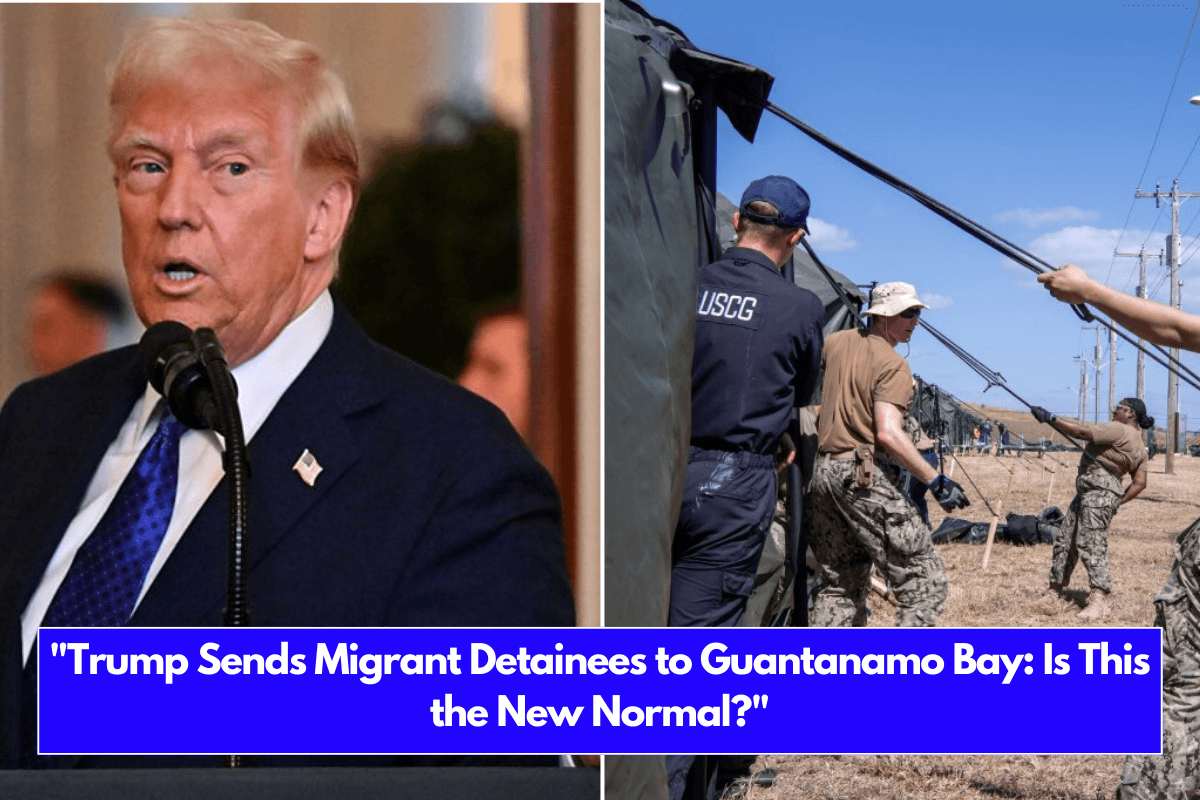The U.S. government, under President Donald Trump, is moving rapidly to convert parts of the Guantanamo Bay Naval Base into a large-scale immigration detention center.
This new directive aims to house thousands of unauthorized migrants deemed “high-priority” due to criminal backgrounds. The plan is controversial, raising questions about human rights, legal procedures, and the treatment of migrants.
First Group of Detainees Arrives at Guantanamo Bay
On Tuesday, the first group of 10 migrants arrived at Guantanamo Bay from the Fort Bliss Army base in Texas. U.S. officials revealed that these detainees were classified as “high-threat” individuals, including Venezuelan men linked to Tren De Aragua, a notorious criminal gang. The detainees will be held in cells within the naval base’s secure areas.
U.S. Officials: Future detainees sent to the base will primarily be unauthorized immigrants arrested by Immigration and Customs Enforcement (ICE).
ICE has already intensified its operations across the country, arresting between 800 to 1,000 migrants daily—significantly higher than the 312 daily arrests recorded during Joe Biden’s last year as president.
What Will the Detention Facilities Look Like?
Guantanamo Bay’s expanded detention facilities are being set up outside the existing Migrant Operations Center, where asylum-seekers intercepted at sea are typically processed.
New tent facilities are being constructed to house the incoming detainees, distinguishing them from previous groups processed for resettlement in countries like Canada and Australia.
- Existing Migrant Operations Center: Used for screening asylum-seekers intercepted at sea.
- New Tent Facilities: Designed for high-priority migrant detainees with criminal records.
Guantanamo Bay has a long history of detaining migrants. In the early 1990s, thousands of Haitian refugees were housed there, including those diagnosed with HIV who were banned from entering the U.S. at the time.
Why Guantanamo Bay?
Defense Secretary Pete Hegseth, during a visit to the southwest border, described Guantanamo Bay as the ideal location to detain individuals considered dangerous or criminal.
“Where are you going to put Tren De Aragua before you send them all the way back? How about a maximum-security prison at Guantanamo Bay, where we have the space,” Hegseth said.
This statement reflects the administration’s position that Guantanamo offers the necessary security to house high-risk individuals before deportation.
Legal and Human Rights Concerns
The decision has sparked an internal debate within the U.S. government over the legal rights of the detainees and which agency—either the Department of Defense or the Department of Homeland Security—should have custody.
Key concerns include:
- Legal Status: What rights will detainees have, especially if they seek asylum or face deportation?
- Human Rights Issues: Advocates worry about the treatment and living conditions of migrants held at the base.
- Historical Context: Critics recall past human rights violations involving detained Haitian migrants in the 1990s.
The U.S. has long followed a policy of preventing migrants intercepted at sea from seeking asylum on U.S. soil to deter maritime migration. This policy, combined with the use of Guantanamo Bay for detention, raises ethical concerns among human rights groups.
Broader Implications
Impact on Immigration Policy
Trump’s plan marks a major shift in U.S. immigration enforcement, signaling the administration’s focus on mass detentions and deportations. By repurposing a military site known for housing terrorism suspects, the policy could set a precedent for future handling of unauthorized migrants.
Possible Backlash
- Domestic Opposition: Democratic leaders and human rights organizations are expected to challenge the move.
- International Criticism: Countries like Venezuela may view the detention of their citizens at a military base as provocative.
- Potential Legal Battles: The legal rights of migrants held at Guantanamo could become the subject of court cases, especially if asylum claims are denied without due process.
The decision to use Guantanamo Bay for large-scale migrant detention has reignited debates over U.S. immigration policy, human rights, and the appropriate use of military facilities.
While the Trump administration argues that this approach is necessary for national security, opponents fear it could lead to abuses and legal complications. The situation underscores the broader challenges of addressing immigration while balancing security concerns and humanitarian obligations.
